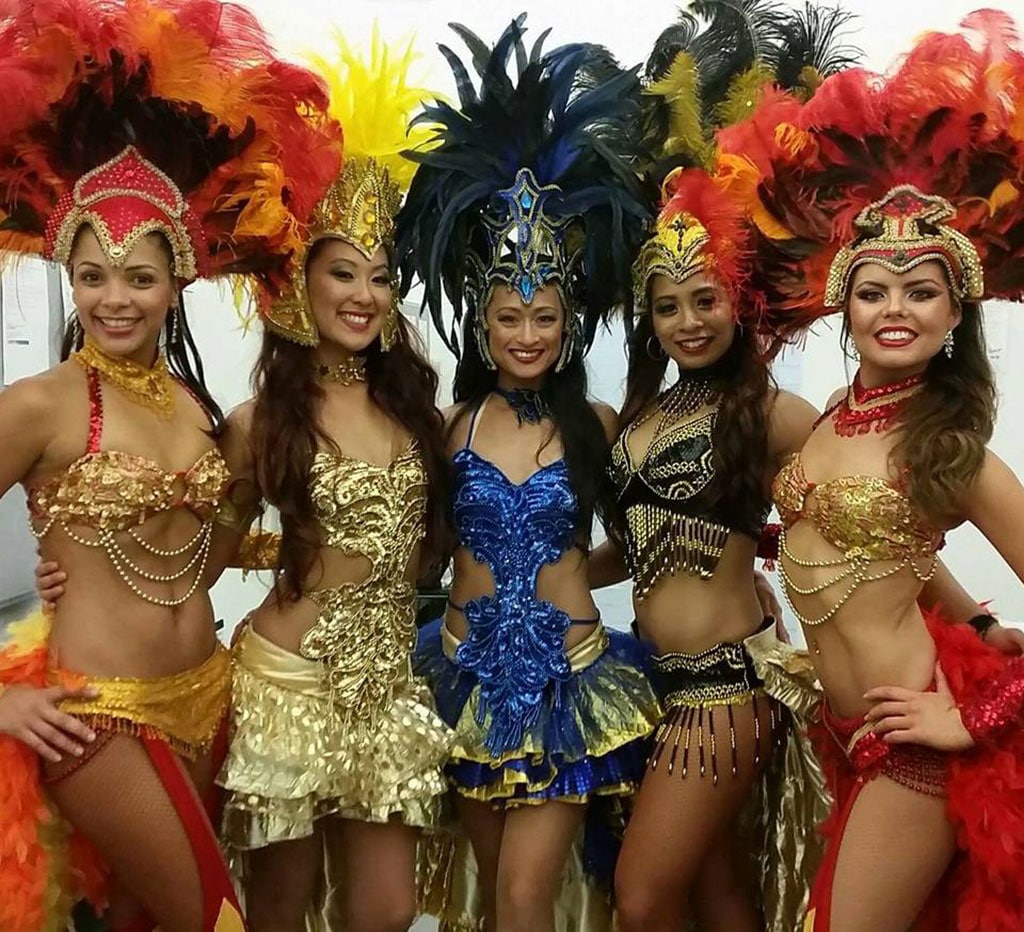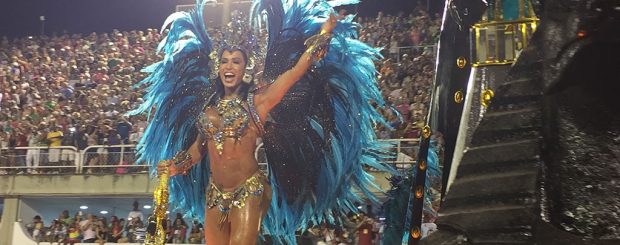Rio Carnival Samba Schools
At Rio Carnival there are several samba schools each representing different neighbourhoods or social clubs. They are divided into three leagues that vie for top ranking following the annual Carnival parades. Division 1 (the top league) schools play in the Sambadrome, Division 2 features on Avenida Rio Branco and Division 3 on Avenida 28 de Setembro near the Marcanã Stadium.
How the Rio Carnival Samba Schools Prepare
Preparations start a year before the parade (after the conclusion of the previous Carnival) as each samba school mobilises its tens of thousands of supporters to create various aspects of the school’s display. A theme is chosen, music written and Rio Carnival costumes made, while the dances are choreographed by the carnavelesco: the school’s director. By December, the rehearsals have started and then the sambas are recorded and released to record stores in time for Christmas.
The Parades
The main parade for Division 1 schools – the Desfile – occurs on the Sunday and Monday nights of Carnival week. Samba schools, which often involve some 50,000 people – all take part in a spectacular piece of theatre. The production is a competition between schools attempting to gain points from their presentation: a mix of song, story, dress, dance and rhythm. As the schools pass through the Passerela da Samba, the Sambadrome’s parade ground, judges award points according to a specific criteria with each school restricted to a timeframe of between 85 and 95 minutes.

The Criteria
Regardless of what theme the school chooses, all performances must include basic elements which are as follows:
- The percussion section (the bateria) has to sustain the beat that drives the school’s song and dance. The samba enredo is the music; the enredo is the accompanying story or lyrics.
- The harmonia refers to the level of synchronicity between the bateria and the dance by the thousands of samba dancers (passistas). The dancers are conducted by pastoras who lead by example.
- The evoluҫão refers to the quality of the dance, and the choreography is judged on its spontaneity, the pastoras’ skill and the excitement that the performance generates.
- The costumes are judged on their originality. The colours are always the traditional ones adopted by each school.
Other Parts of the School Parade
The gigantic, richly decorated floats (carros alegόricos) carry some of the prominent figures including the flag-bearer (Porta-Bandeira): a woman who carries the school’s symbol who is potentially a big points scorer. The dance master (Mestre-Sala) is also an important symbolic figure who has the paramount job of sustaining the dancers’ rhythms. The school’s board of directors marches at the head of the procession that often includes invited celebrities or sports teams. The bulk of the procession behind is formed by the alas: the wings or blocks which consist of hundreds of costumed individuals each linked to a part of the school’s theme.
Each individual school also holds an Ala das Baianas. Dressed in traditional African-style headdresses and the flowing white costumes typical of Salvador, a procession of women honour the debt owed to Bahian emigrants who introduced many of the traditions of the Rio Carnival parade.





